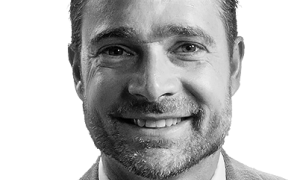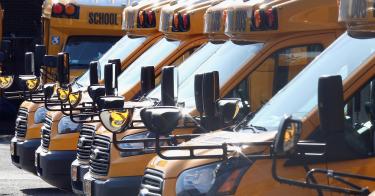When public schools closed their doors during the COVID-19 pandemic, Dominique Burgess saw an opportunity. With the support of a small group of families, Burgess created an online “microschool” for students ready to continue learning online.
Parents liked her “open for business” sign so much that Burgess now has online and in-person schools enrolling students from 18 states, with plans to open five more locations in the next five years. This National School Choice Week, Burgess’s microschool is an example of the new, customized learning options growing nationwide and currently serving some 2 million students.
Burgess is the entrepreneur behind Burbrella Learning Academy Inc., which offers a “personalized, non-traditional educational experience” online for students in grades K-12 and students in K-5 at their in-person location in Burlington, North Carolina.
“We started an online microschool during the pandemic to support homeschooling families, as well as families who had children at home due to COVID and didn’t know what to do,” Burgess said in an interview. “We specifically looked to be a collaborative partner with families,” she explained, adding that she asked families, “What do you need? How can we support?”
>>> Idaho Families Deserve School Choice, Too
Burgess started out with seven families, but within three months of opening, she had students from 35 families enrolled.
Microschools are, as the name suggests, small, generally private, schools that can offer individualized services due to their size. Parents in North Carolina can use education savings accounts, flexible scholarships that state families can use for education products and services, including tuition, to attend Burbrella.
Burgess says that some of her students come to Burbrella able to read and complete math assignments at grade level, while others do not, and her school is able to help all of them due to the smaller classroom settings.
“Just because you are 8 years old and are supposed to be in the third grade, it doesn’t mean you are on the third-grade level,” Burgess says. “Operating in learning pods [small groups] allow for our teachers to differentiate and personalize instruction to the needs of each child,” she says.
Burgess explains that some of her students attend her location in Burlington five days per week, while others attend two days per week and spend the rest of the week in homeschool settings. According to the National Microschooling Center, a microschool advocacy and research organization based in Nevada, more than half of microschools offer full-day learning services, while one in five microschools have hybrid programs.
Precise estimates of how many students attend microschools nationwide are hard to come by, but at the pandemic’s height, a survey conducted by researchers at Harvard and Stanford found that some 3 million students were being educated full- or part-time in a small setting such as a learning pod or microschool. Today, based on other polling data and enrollment trends, between 1 and 2 million students are in microschools full-time—a remarkable number considering the concept was nearly unheard of just three years ago. Burgess has 26 students attending her in-person location with another 136 online.
>>> Arizona Gov. Katie Hobbs Declares War on Educational Choice
In addition to being smaller than traditional schools, microschools also make use of nontraditional spaces in which to operate – like an old Foot Locker shoe store in a local mall. Burgess says her North Carolina location has converted the store into a small classroom and uses meeting space in former retail locations next door for activities.
“We want to go into these nontraditional learning spaces and transform it into microschools so people can see that any space can be turned into a learning institution,” Burgess says. According to the Microschooling Center, 39% of microschools refurbish commercial business space in which to operate and another 25% use space in churches.
After Burbrella’s first year, Burgess says she realized her school was targeting families “who wanted school choice” and “had an understanding of what their children needed…and wanted more.” And families want more of what Burgess is creating. This attitude of entrepreneurship, optimism, and opportunity are the essence of National School Choice Week 2024.
This piece originally appeared in MSN


